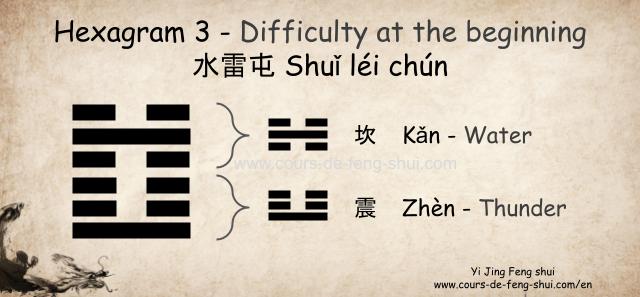
Hexagram 3 of the Yi Jing is composed of the upper trigram ☵坎 Kan (Water, the younger son, water element) and the lower trigram ☳震 Zhen (Thunder, the eldest son).
Interpretation from comments: Initial confrontation, the meeting of two opposing forces within the fundamental rhythm, and the difficulties of the beginning.
In Chinese: 水雷屯 Shuǐ léi chún, the English translation is “The Initial Difficulty.”
Jia Zi combination of the hexagram: Hexagram 3 of the I Ching is associated with the combination Wu Zi 戊子, the 25th combination of the sexagesimal cycle (hour, day, month, year).
- 戊 Wu, celestial stem Yang Earth.
- 子 Zi, terrestrial branch of the Rat.
Interpretation of the drawing of hexagram 3 of the I Ching
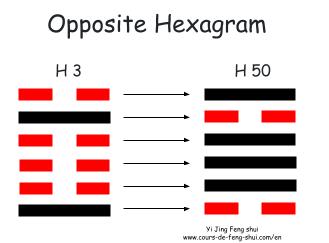
Opposite hexagram (錯卦 Cuo Gua): The opposite hexagram indicates everything that is not, or the opposite of, the solution to the situation.
The opposite hexagram is obtained by replacing the Yang lines with Yin lines and vice versa, resulting in Hexagram 50 – Ding (The Cauldron).
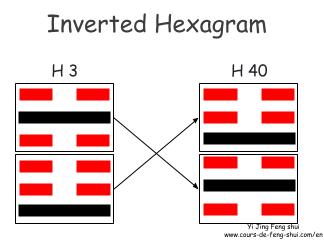
Inverted Hexagram (覆卦 Fu Gua): The permuted hexagram provides information on the origin of the situation.
The permuted hexagram is obtained by swapping the two trigrams, resulting in Hexagram 40 – 雷水解 Xie (deliverance).
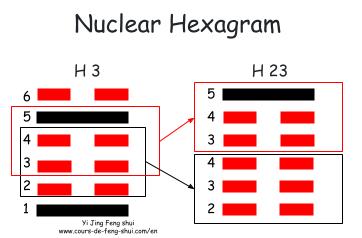
Nuclear (Mutual) Hexagram (互卦 Hu Gua): The nuclear hexagram represents the core of the problem or question.
The nuclear hexagram is obtained by using the four central lines to form two trigrams, resulting in Hexagram 23 – Bo (Stripping Away).
Mutant Hexagram (derived): The mutation of a line results in a new hexagram, which indicates the evolution of the situation.
- Line 6 mutates: the resulting hexagram is H42.
- Line 5 mutates: the resulting hexagram is H24.
- Line 4 mutates: the resulting hexagram is H17.
- Line 3 mutates: the resulting hexagram is H63.
- Line 2 mutates: the resulting hexagram is H60.
- Line 1 mutates: the resulting hexagram is H8.
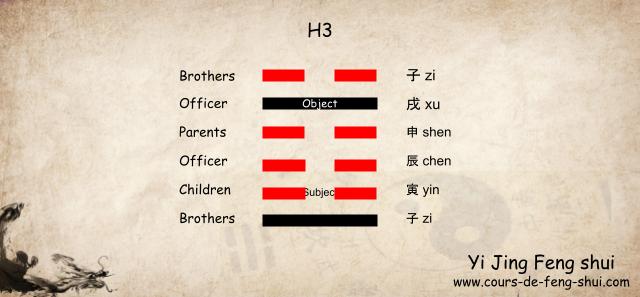
Taoist Yi Jing – Wen Wang Gua
Characteristics of hexagram 3 for the Taoist interpretation of the Yi Jing using the Wen Wang Gua (Liu yao) divination method:
Hexagram 3 belongs to the 2nd generation of the Kan (Water) family. In this hexagram, the Subject is placed on the second line, and the Object is placed on the fifth line.
The Six Relatives:
- 6th line: 子 zi (Water) – Brothers
- 5th line: 戌 xu (Earth) – Officer
- 4th line: 申 shen (Metal) – Parents
- 3rd line: 辰 chen (Earth) – Officer
- 2nd line: 寅 yin (Wood) – Children
- 1st line: 子 zi (Water) – Brothers